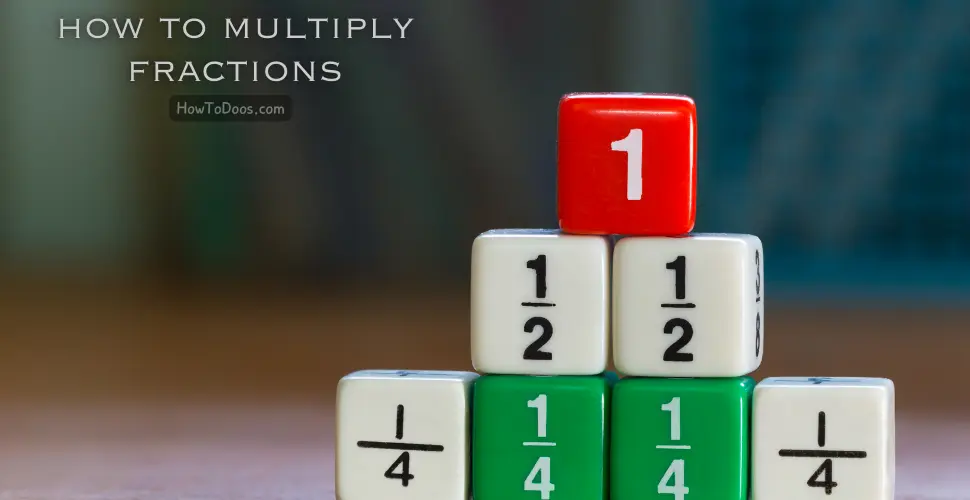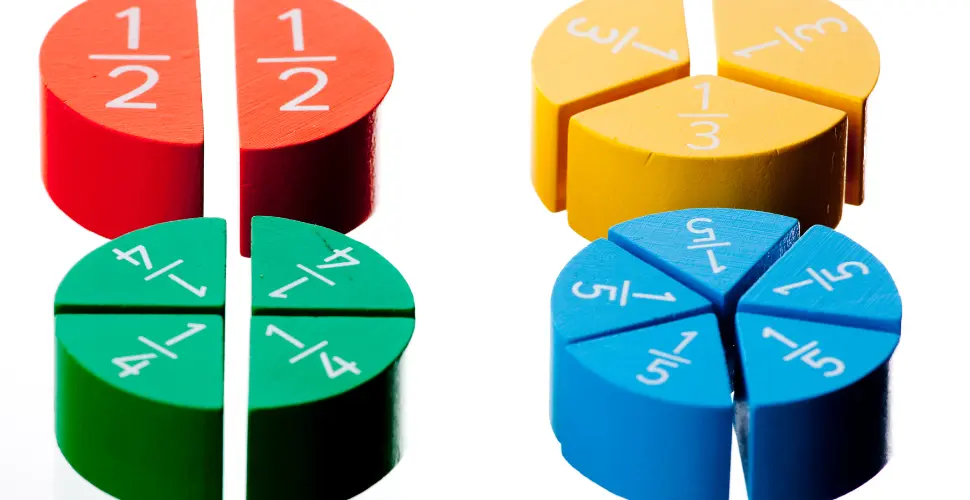How to Multiply Fractions: A Simple Guide
-
 Jessica Williams
Jessica Williams - 07 Sep, 2024

Multiplying fractions might seem tricky at first, but it’s actually quite simple once you understand the process. In this guide, we’ll walk through the steps to multiply fractions and provide clear examples to help you master this important math skill.

What is a Fraction?
A fraction represents a part of a whole and consists of two numbers:
- Numerator: The top number, which represents how many parts you have.
- Denominator: The bottom number, which represents how many parts make up a whole.
For example, in the fraction 3/4, the numerator is 3, and the denominator is 4, meaning you have 3 out of 4 parts.
Steps to Multiply Fractions
Multiplying fractions is much simpler than adding or subtracting them. The key is to multiply the numerators and denominators directly. Follow these steps:
-
Multiply the Numerators: Multiply the top numbers (numerators) of both fractions.
-
Multiply the Denominators: Multiply the bottom numbers (denominators) of both fractions.
-
Simplify the Result: If the resulting fraction can be simplified, reduce it to its lowest terms by dividing both the numerator and denominator by their greatest common divisor (GCD).
Example 1: Multiplying Simple Fractions
Let’s multiply two simple fractions: 2/3 and 4/5.
Step 1: Multiply the numerators:
2 × 4 = 8
Step 2: Multiply the denominators:
3 × 5 = 15
So, 2/3 × 4/5 = 8/15. Since 8/15 cannot be simplified, this is the final answer.
Example 2: Simplifying After Multiplication
Let’s try another example where the result needs simplifying: 3/4 × 2/6.
Step 1: Multiply the numerators:
3 × 2 = 6
Step 2: Multiply the denominators:
4 × 6 = 24
So, 3/4 × 2/6 = 6/24. This fraction can be simplified by dividing both the numerator and denominator by their GCD, which is 6:
6 ÷ 6 = 1, and 24 ÷ 6 = 4.
Therefore, 3/4 × 2/6 = 1/4.

Multiplying Mixed Numbers
When multiplying mixed numbers (numbers that combine a whole number and a fraction), you’ll need to convert them into improper fractions first.
Steps for Multiplying Mixed Numbers:
-
Convert the Mixed Numbers: Change each mixed number into an improper fraction.
-
Multiply as Usual: Multiply the fractions using the same steps as outlined above.
-
Simplify and Convert Back: Simplify the resulting fraction if necessary, and convert it back to a mixed number if needed.
Example 3: Multiplying Mixed Numbers
Let’s multiply 1 1/2 by 2 2/3.
Step 1: Convert the mixed numbers to improper fractions:
1 1/2 = 3/2
2 2/3 = 8/3
Step 2: Multiply the improper fractions:
3/2 × 8/3 = (3 × 8) / (2 × 3) = 24/6
Step 3: Simplify the result:
24/6 = 4
So, 1 1/2 × 2 2/3 = 4.
Multiplying Fractions by Whole Numbers
If you need to multiply a fraction by a whole number, you can turn the whole number into a fraction by giving it a denominator of 1, then multiply as usual.
Example 4: Multiplying a Fraction by a Whole Number
Let’s multiply 5/6 by 3.
Step 1: Turn the whole number into a fraction:
3 = 3/1
Step 2: Multiply the fractions:
5/6 × 3/1 = (5 × 3) / (6 × 1) = 15/6
Step 3: Simplify if possible:
15/6 can be simplified by dividing both the numerator and denominator by 3:
15 ÷ 3 = 5, and 6 ÷ 3 = 2.
So, 5/6 × 3 = 5/2 or 2 1/2 as a mixed number.
Tips for Multiplying Fractions
- Always Simplify: Simplifying your fractions at the end helps you express your answer in the most concise form.
- Check for Cross Cancellation: Before multiplying, check if you can cancel any common factors between the numerators and denominators to make multiplication easier.
Cross Cancellation Example:
Multiply 4/9 by 3/8.
Before multiplying, notice that the 3 in the numerator of the second fraction and the 9 in the denominator of the first fraction share a common factor of 3. So, divide both by 3:
4/9 × 3/8 = 4/3 × 1/8 = (4 × 1) / (3 × 8) = 4/24.
Now simplify 4/24:
4 ÷ 4 = 1, and 24 ÷ 4 = 6.
So, 4/9 × 3/8 = 1/6.
Common Mistakes to Avoid
- Forgetting to Simplify: Always remember to check if your answer can be reduced to a simpler form.
- Not Converting Mixed Numbers: Be sure to convert mixed numbers into improper fractions before multiplying.
- Skipping Cross Cancellation: Cross-canceling can make your multiplication much easier, so don’t overlook it.

Summary
Multiplying fractions is a straightforward process of multiplying the numerators and denominators. Whether you’re multiplying simple fractions, mixed numbers, or whole numbers with fractions, the steps remain consistent. By following the rules and simplifying when necessary, you can quickly master how to multiply fractions with confidence.
Remember, with practice, multiplying fractions will become second nature!

